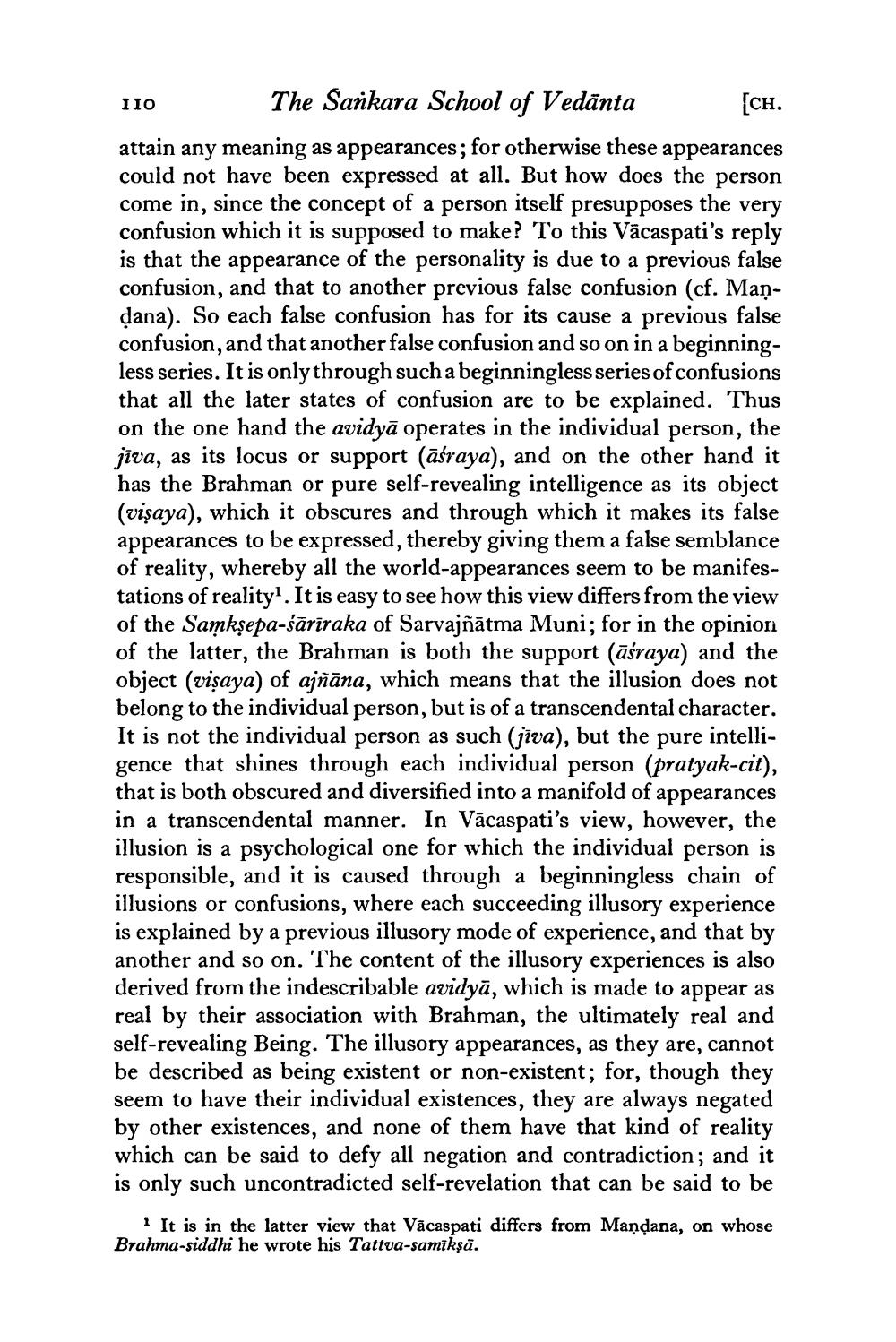________________
ΙΙο
The Sankara School of Vedānta [CH. attain any meaning as appearances; for otherwise these appearances could not have been expressed at all. But how does the person come in, since the concept of a person itself presupposes the very confusion which it is supposed to make? To this Vācaspati's reply is that the appearance of the personality is due to a previous false confusion, and that to another previous false confusion (cf. Mandana). So each false confusion has for its cause a previous false confusion, and that another false confusion and so on in a beginningless series. It is only through such a beginningless series of confusions that all the later states of confusion are to be explained. Thus on the one hand the avidyā operates in the individual person, the jīva, as its locus or support (āśraya), and on the other hand it has the Brahman or pure self-revealing intelligence as its object (visaya), which it obscures and through which it makes its false appearances to be expressed, thereby giving them a false semblance of reality, whereby all the world-appearances seem to be manifestations of reality. It is easy to see how this view differs from the view of the Samkṣepa-śārīraka of Sarvajñātma Muni; for in the opinion of the latter, the Brahman is both the support (āśraya) and the obiect (visaya) of aiñāna, which means that the illusion does not belong to the individual person, but is of a transcendental character. It is not the individual person as such (jīva), but the pure intelligence that shines through each individual person (pratyak-cit), that is both obscured and diversified into a manifold of appearances in a transcendental manner. In Vācaspati's view, however, the illusion is a psychological one for which the individual person is responsible, and it is caused through a beginningless chain of illusions or confusions, where each succeeding illusory experience is explained by a previous illusory mode of experience, and that by another and so on. The content of the illusory experiences is also derived from the indescribable avidyā, which is made to appear as real by their association with Brahman, the ultimately real and self-revealing Being. The illusory appearances, as they are, cannot be described as being existent or non-existent; for, though they seem to have their individual existences, they are always negated by other existences, and none of them have that kind of reality which can be said to defy all negation and contradiction; and it is only such uncontradicted self-revelation that can be said to be
1 It is in the latter view that Vācaspati differs from Mandana, on whose Brahma-siddhi he wrote his Tattva-samikşā.




